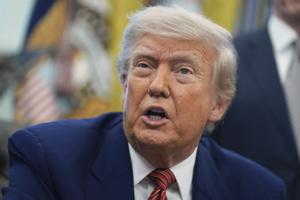A comprehensive analysis has shed light on the potential financial repercussions of former President Donald Trump’s proposed tariff plans, indicating a substantial direct cost of $82.3 billion for a crucial segment of U.S. employers. This significant finding underscores the profound economic impact such trade policies could have, placing considerable financial strain on American businesses across various sectors. The study serves as a critical pre-assessment for future economic landscapes shaped by evolving trade policies and their implications for the US economy.
The projected $82.3 billion in employer costs specifically targets a vital cross-section of U.S. companies, many of whom are deeply integrated into global supply chains or rely heavily on imported components and raw materials for their operations. This direct financial burden stems from increased import duties, which would necessitate immediate adjustments to their operational budgets and strategic planning. The sheer magnitude of this figure highlights a significant challenge for businesses striving to maintain competitiveness and profitability under revised trade conditions, directly contributing to substantial employer costs.
Faced with such an immense financial outlay, U.S. employers would likely explore a range of mitigating strategies, each carrying its own set of economic consequences. Businesses might be compelled to implement price hikes on goods and services, ultimately passing increased costs onto consumers and potentially fueling inflationary pressures within the US economy. Alternatively, firms could resort to workforce reductions through layoffs or impose strict hiring freezes, directly impacting employment rates. Another avenue involves absorbing the costs through considerable contractions in profit margins, which could stifle investment and innovation.
Beyond the immediate employer costs, the ripple effect of these Trump tariffs could influence broader macroeconomic indicators. An increase in consumer prices due to tariff-induced price hikes could dampen consumer spending, a key driver of economic growth. Similarly, a decline in corporate profits and potential job losses could further slow down overall economic expansion. The analysis emphasizes that such trade policy shifts could also compromise the global competitiveness of American industries, particularly those competing with international counterparts not subject to similar tariff burdens.
The study points to potential widespread disruption across diverse sectors of the US economy, from manufacturing and retail to technology and agriculture. This prospect raises considerable concerns among business leaders, trade organizations, and economic policy analysts. Debates surrounding trade policy have always been contentious, but this analysis provides concrete figures that amplify the anxieties regarding long-term sustainability and the growth trajectory for companies operating under these proposed trade conditions. The cumulative economic impact could reshape industrial landscapes.
This detailed examination offers critical insights for policymakers grappling with future international trade policies, businesses strategizing their long-term viability, and the general public seeking to understand the potential economic shifts. As discussions surrounding Trump tariffs continue to evolve, this analysis provides a robust quantitative foundation for understanding the real-world employer costs and broader economic implications, reinforcing the complexity and sensitivity of global trade relations on the domestic front.
Discover more from The Time News
Subscribe to get the latest posts sent to your email.






